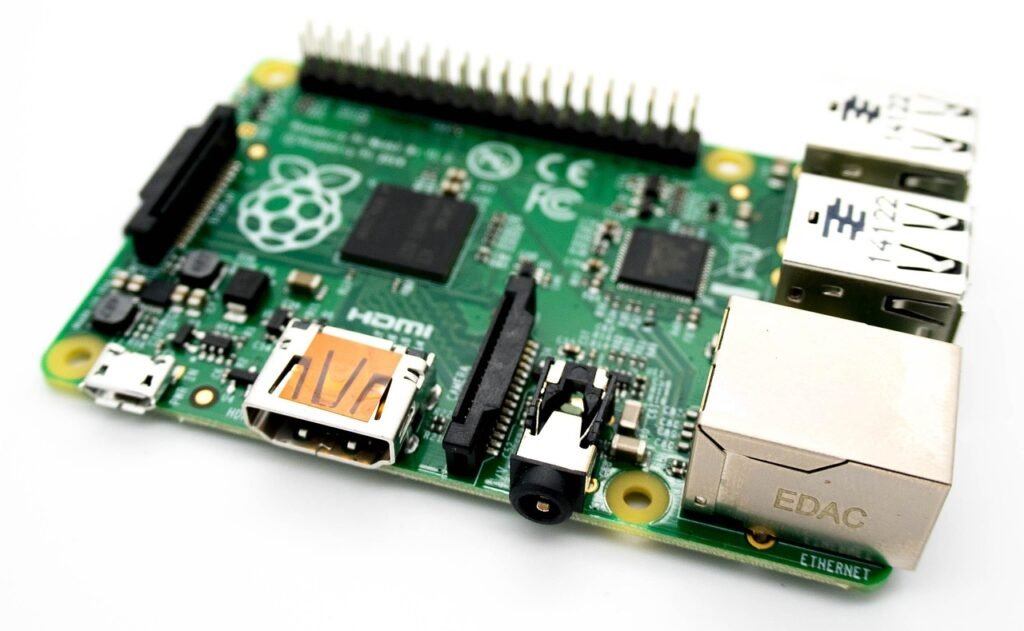
Introduction to Raspberry Pi
The Raspberry Pi is a small, affordable, and versatile single-board computer developed by the Raspberry Pi Foundation. It was designed to promote computer science education, but its flexibility has made it popular among hobbyists, engineers, and developers for various Raspberry Pi projects, from home automation to robotics.
In this comprehensive guide, we will explore:
- What is Raspberry Pi?
- Different Raspberry Pi versions and which one is best for your needs
- Understanding Raspberry Pi GPIO pins
- How to program Raspberry Pi (Python, C++, and more)
- Exciting Raspberry Pi projects for beginners and experts
- SEO-optimized tips for ranking your Raspberry Pi blog
What is Raspberry Pi?
The Raspberry Pi is a credit-card-sized computer that runs on Linux-based operating systems like Raspberry Pi OS (formerly Raspbian). It features:
- A CPU, GPU, RAM, and USB ports
- GPIO (General Purpose Input/Output) pins for hardware interfacing
- HDMI output for display
- Ethernet/Wi-Fi/Bluetooth for connectivity
It is widely used for:
- Learning programming
- Building DIY electronics projects
- Home automation (smart lights, security systems)
- Robotics and AI applications
- Media centers (using Kodi or Plex)
Best Raspberry Pi Versions in 2025
Choosing the right Raspberry Pi version depends on your project requirements. Here are the top models:
1. Raspberry Pi 5 (Latest & Most Powerful)
- 4GB/8GB RAM options
- 2.4GHz quad-core CPU
- Dual 4K HDMI output
- PCIe 2.0 support for faster storage
- Best for: High-performance computing, gaming, and AI
2. Raspberry Pi 4 Model B (Still Popular)
- 1GB/2GB/4GB/8GB RAM variants
- 1.5GHz quad-core CPU
- Dual-band Wi-Fi & Bluetooth 5.0
- Best for: General-purpose projects, media centers
3. Raspberry Pi Zero 2 W (Budget & Compact)
- 1GHz quad-core CPU
- 512MB RAM
- Wi-Fi & Bluetooth
- Best for: Portable projects, IoT devices
4. Raspberry Pi Pico (Microcontroller, Not a Full Computer)
- RP2040 dual-core ARM Cortex-M0+
- No OS, programmable via MicroPython/C++
- Best for: Embedded systems, robotics
Which Raspberry Pi is best for beginners?
- Raspberry Pi 4 (2GB) – Balanced performance and affordability.
- Raspberry Pi Zero 2 W – Great for lightweight IoT projects.
Understanding Raspberry Pi GPIO Pins
The GPIO (General Purpose Input/Output) pins allow the Raspberry Pi to interact with external hardware like sensors, motors, and LEDs.
Raspberry Pi GPIO Pinout
- 40-pin header (on most models)
- Power pins (3.3V, 5V, GND)
- Digital I/O pins (can be programmed as input or output)
- PWM (Pulse Width Modulation) pins for motor control
- I2C, SPI, UART for communication with peripherals
How to Use GPIO Pins?
You can control GPIO pins using:
- Python (RPi.GPIO library)
- C/C++ (WiringPi or pigpio)
- Node.js (onoff library)
Example: Blinking an LED with Python
import RPi.GPIO as GPIO
import time
GPIO.setmode(GPIO.BCM)
LED_PIN = 17
GPIO.setup(LED_PIN, GPIO.OUT)
while True:
GPIO.output(LED_PIN, GPIO.HIGH)
time.sleep(1)
GPIO.output(LED_PIN, GPIO.LOW)
time.sleep(1)
Safety Considerations:
When working with GPIO pins:
- Voltage Levels: Ensure connected components operate at 3.3V to prevent damage.
- Current Limits: Do not exceed the current rating of the pins. Use resistors where necessary.
- Proper Shutdown: Always shut down the Raspberry Pi properly before disconnecting hardware.
By adhering to these guidelines, you can safeguard your Raspberry Pi and connected components.
How to Program Raspberry Pi?
Raspberry Pi supports multiple programming languages
1. Python (Most Popular)
- Easy to learn, great for beginners
- Libraries: RPi.GPIO, GPIO Zero, TensorFlow Lite
2. C/C++ (For Performance-Critical Projects)
- Used in robotics and embedded systems
- Libraries: WiringPi, pigpio
3. JavaScript/Node.js (IoT & Web Apps)
- Raspberry Pi + Node.js = IoT powerhouse
- Libraries: onoff, johnny-five
4. Scratch (For Kids & Beginners)
- Block-based programming
- Great for learning logic
Top Raspberry Pi Projects in 2024
1. Home Automation System
- Control lights, fans, and appliances using a Raspberry Pi + Relay Module.
- Use Home Assistant or OpenHAB for automation.
2. Retro Gaming Console (RetroPie)
Turn your Pi into a NES, SNES, or PlayStation emulator.
3. Raspberry Pi Robot (Using GPIO & Motors)
Build a line-following or obstacle-avoiding robot.
4. Weather Station (With Sensors)
Monitor temperature, humidity, and air quality.
5. AI-Powered Security Camera
Use OpenCV + Raspberry Pi for face recognition.
6. Pi-hole (Network-Wide Ad Blocker)
Block ads at the DNS level.
Conclusion
The Raspberry Pi stands as a testament to the power of accessible computing, bridging the gap between learning and practical application.
Pingback: Ethical Hacking as a Hobby in 2025: Step-by-Step Beginner’s Guide + Tools & Tips
Pingback: Arduino India Factory 2025: New Ek R4 Boards, Made-in-India Strategy & Counterfeit Solutions
Pingback: The Shocking Capabilities of GPT-5 and GPT-4o: Will AI Erase Human Creativity?